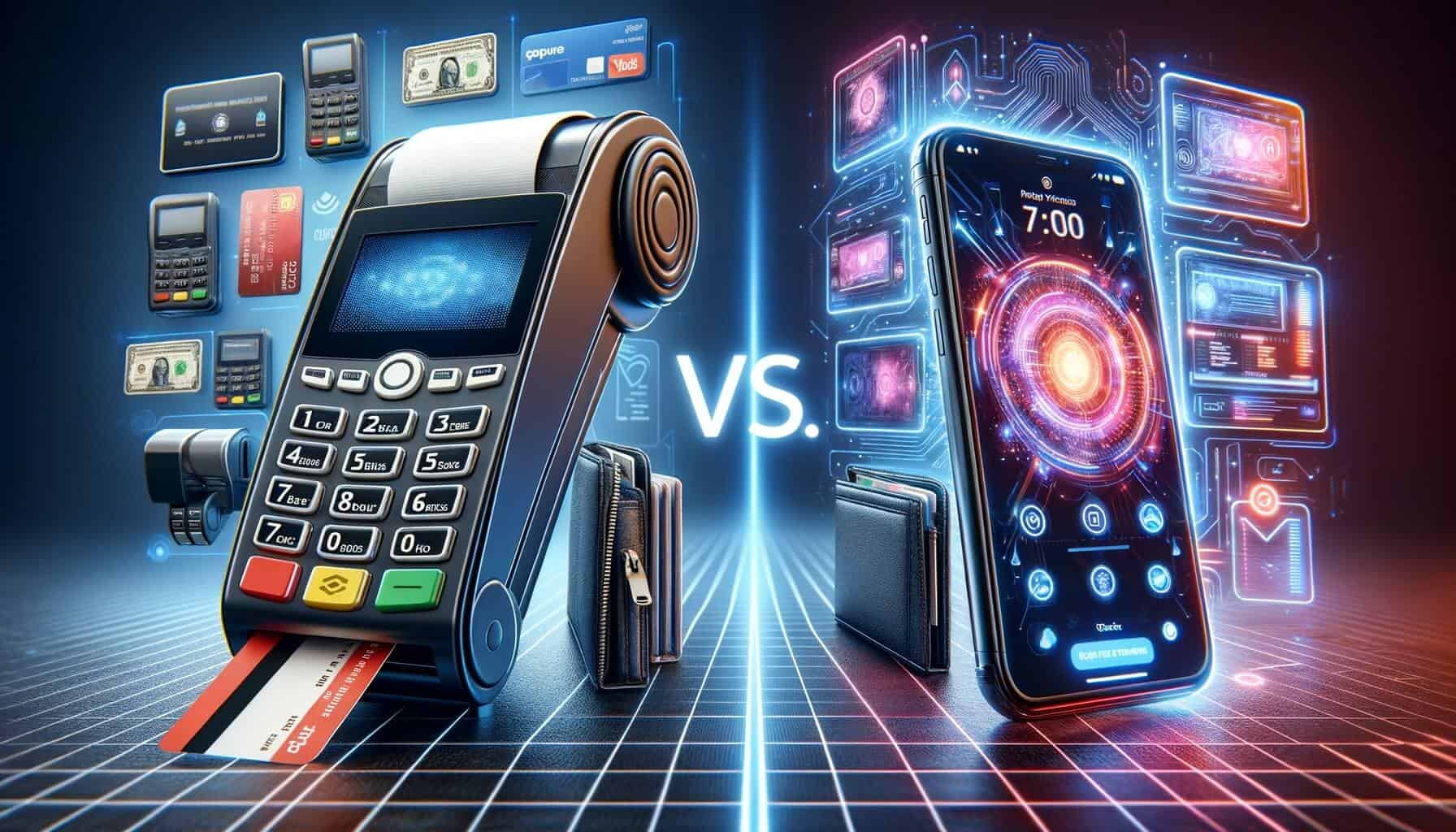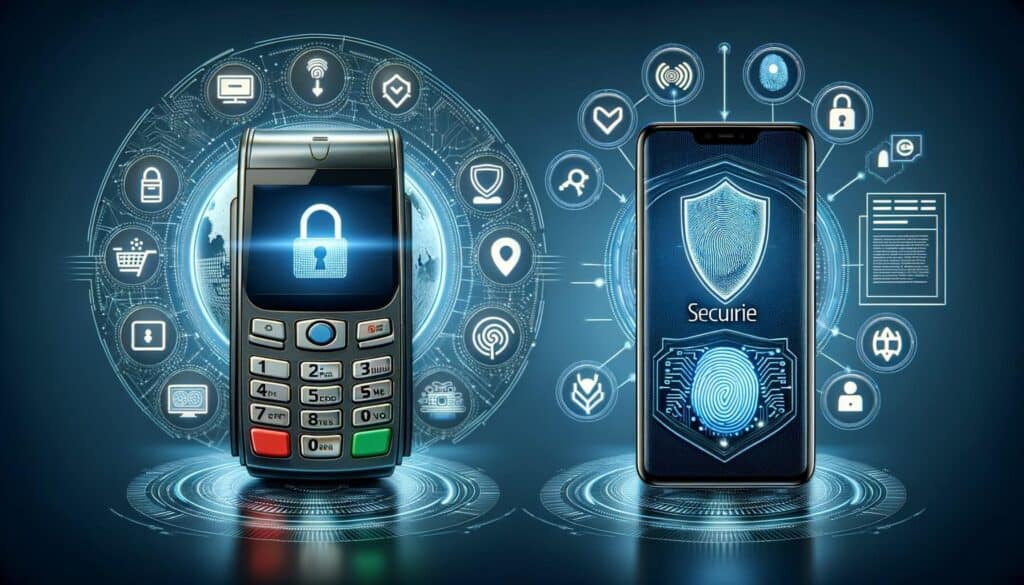
By Amanda Hoglund February 20, 2025
In today’s digital age, the way we make payments has undergone a significant transformation. Gone are the days when cash was king, as more and more people are turning to electronic payment methods. Two popular options that have emerged are payment terminals and mobile wallets. But do you really need both?
In this comprehensive article, we will delve into the world of payment terminals and mobile wallets, exploring their advantages, limitations, security features, compatibility, cost implications, integration capabilities, user experience, and more. By the end, you will have a clear understanding of whether you need both payment terminals and mobile wallets or if one option suffices.
The Rise of Mobile Wallets: Advantages and Features

Mobile wallets have gained immense popularity in recent years, revolutionizing the way we make payments. A mobile wallet is a digital version of your physical wallet, allowing you to store your credit card, debit card, and other payment information securely on your smartphone.
One of the key advantages of mobile wallets is convenience. With just a few taps on your phone, you can make payments at various merchants, eliminating the need to carry multiple cards or cash. Additionally, mobile wallets often offer features such as loyalty programs, digital receipts, and the ability to split bills with friends, enhancing the overall user experience.
Another significant advantage of mobile wallets is their enhanced security features. Unlike traditional payment methods, mobile wallets utilize encryption technology to protect your payment information. This adds an extra layer of security, reducing the risk of fraud and unauthorized access. Furthermore, many mobile wallets offer biometric authentication options, such as fingerprint or facial recognition, ensuring that only you can access your payment information.
The Role of Payment Terminals: Benefits and Limitations

While mobile wallets have gained popularity, payment terminals still play a crucial role in the payment ecosystem. Payment terminals, also known as point-of-sale (POS) terminals, are physical devices used by merchants to accept card payments.
These terminals are typically connected to a payment processor, which facilitates the transaction between the merchant and the customer’s bank. One of the key benefits of payment terminals is their widespread acceptance. Almost every merchant, from small businesses to large retailers, has a payment terminal, making it a convenient option for customers.
Payment terminals also offer a reliable and fast payment method. With a simple swipe or insert of a card, the transaction is processed within seconds. This speed is particularly important in high-volume environments, such as retail stores or restaurants, where efficiency is crucial. Additionally, payment terminals often support various payment methods, including chip cards, contactless payments, and even mobile wallets, providing customers with flexibility.
However, payment terminals do have their limitations. One of the main drawbacks is the need for physical hardware. Merchants must invest in payment terminals, which can be costly, especially for small businesses. Additionally, payment terminals require regular maintenance and software updates to ensure they are functioning properly and compliant with industry standards. This ongoing maintenance can add to the overall cost and complexity for merchants.
Security and Fraud Prevention: Comparing Payment Terminals and Mobile Wallets

When it comes to security and fraud prevention, both payment terminals and mobile wallets have their strengths. Payment terminals rely on industry-standard security protocols, such as encryption and tokenization, to protect cardholder data during transactions. These security measures have been developed and refined over many years, making payment terminals a trusted and secure option for accepting card payments.
On the other hand, mobile wallets offer additional security features that can further enhance the protection of your payment information. As mentioned earlier, mobile wallets often utilize biometric authentication, such as fingerprint or facial recognition, to ensure that only authorized users can access the payment information stored on their smartphones. This adds an extra layer of security, as biometric data is unique to each individual and difficult to replicate.
Compatibility and Accessibility: Which Option is More Convenient?

When it comes to compatibility and accessibility, mobile wallets have a clear advantage. Mobile wallets can be used with any smartphone that supports the necessary technology, regardless of the operating system. Whether you have an iPhone or an Android device, you can easily download a mobile wallet app and start making payments. This universality makes mobile wallets a convenient option for consumers, as they are not limited by the type of device they own.
On the other hand, payment terminals require physical hardware and are often specific to certain payment processors. This means that merchants must ensure their payment terminals are compatible with their chosen payment processor, adding an extra layer of complexity. Additionally, payment terminals may not support all payment methods, such as contactless payments or mobile wallets, depending on their capabilities and software.
Cost Analysis: Evaluating the Financial Implications of Payment Terminals and Mobile Wallets
When it comes to cost analysis, both payment terminals and mobile wallets have their own financial implications. Payment terminals require an upfront investment in hardware, which can range from a few hundred to several thousand dollars, depending on the type and capabilities of the terminal. Additionally, merchants must pay fees to their chosen payment processor for each transaction processed through the terminal. These fees can vary depending on factors such as transaction volume, card type, and the payment processor’s pricing structure.
On the other hand, mobile wallets are typically free to download and use. However, merchants may incur fees for accepting mobile wallet payments, similar to payment terminal fees. These fees are often a percentage of the transaction value and can vary depending on the mobile wallet provider and the merchant’s agreement with their payment processor.
Integration and Scalability: Exploring the Business Perspective
From a business perspective, integration and scalability are important factors to consider when deciding between payment terminals and mobile wallets. Payment terminals are well-established in the market and have been integrated into various business systems, such as inventory management and accounting software. This integration allows for seamless transaction processing and reporting, streamlining business operations.
However, mobile wallets are also becoming increasingly integrated into business systems. Many mobile wallet providers offer application programming interfaces (APIs) that allow merchants to integrate mobile wallet payments into their existing systems. This integration can provide valuable insights into customer behavior and preferences, enabling businesses to tailor their offerings and marketing strategies accordingly.
In terms of scalability, payment terminals offer a more traditional approach. As a business grows, additional payment terminals can be added to accommodate increased transaction volume. However, this scalability comes with additional costs, as each payment terminal requires hardware, software, and ongoing maintenance.
On the other hand, mobile wallets offer a more flexible and scalable solution. As mobile wallets are digital, there is no physical limitation on the number of transactions that can be processed. This scalability can be particularly beneficial for businesses with high transaction volumes or those operating in multiple locations.
User Experience: Examining the Ease of Use for Payment Terminals and Mobile Wallets
User experience is a critical aspect when evaluating payment terminals and mobile wallets. Payment terminals offer a familiar and straightforward experience for customers. Most people are accustomed to using payment terminals, whether it’s swiping a card or inserting a chip. The process is quick and intuitive, requiring minimal effort from the customer.
On the other hand, mobile wallets offer a more modern and streamlined user experience. With just a few taps on their smartphones, customers can make payments, view transaction history, and even receive digital receipts. Mobile wallets also offer features such as loyalty programs and the ability to split bills, enhancing the overall user experience. However, it’s important to note that not all customers may be comfortable or familiar with using mobile wallets, especially older demographics or those who prefer more traditional payment methods.
Frequently Asked Questions (FAQs) about Payment Terminals and Mobile Wallets
Q1. What is a payment terminal?
Answer: A payment terminal, also known as a point-of-sale (POS) terminal, is a physical device used by merchants to accept card payments. It is typically connected to a payment processor, which facilitates the transaction between the merchant and the customer’s bank.
Q2. What is a mobile wallet?
Answer: A mobile wallet is a digital version of your physical wallet, allowing you to store your credit card, debit card, and other payment information securely on your smartphone. It enables you to make payments at various merchants using just your phone.
Q3. Are mobile wallets secure?
Answer: Yes, mobile wallets utilize encryption technology to protect your payment information. They often offer additional security features such as biometric authentication, ensuring that only authorized users can access the payment information stored on their smartphones.
Q4. Do payment terminals support mobile wallets?
Answer: Many payment terminals now support mobile wallet payments, including contactless payments. However, it’s important to check the capabilities of the specific payment terminal and ensure compatibility with your chosen mobile wallet provider.
Q5. Are there any fees associated with payment terminals and mobile wallets?
Answer: Both payment terminals and mobile wallets may incur fees for accepting payments. Payment terminal fees are typically charged by the payment processor and can vary depending on factors such as transaction volume and card type. Mobile wallet fees are often a percentage of the transaction value and can vary depending on the mobile wallet provider and the merchant’s agreement with their payment processor.
Conclusion
In conclusion, the decision of whether you need both payment terminals and mobile wallets ultimately depends on your specific needs and circumstances. Mobile wallets offer convenience, enhanced security features, and a modern user experience. They are particularly beneficial for individuals who prefer a digital payment method and want to streamline their payment process.
On the other hand, payment terminals offer widespread acceptance, reliability, and compatibility with various payment methods. They are a trusted and secure option for merchants, especially those operating in high-volume environments.
When evaluating payment terminals and mobile wallets, it’s important to consider factors such as security, compatibility, cost implications, integration capabilities, and user experience. By carefully assessing these factors and understanding your business or personal requirements, you can make an informed decision on whether you need both payment terminals and mobile wallets or if one option suffices.
Ultimately, the goal is to choose a payment method that meets your needs, enhances the customer experience, and ensures the security and efficiency of your transactions.